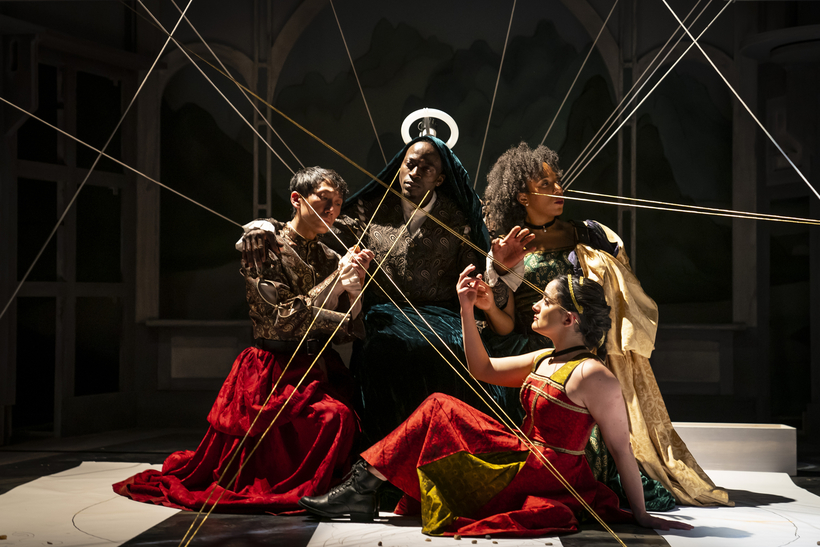If you require a “well-made” play, look elsewhere. Opening with a whoosh of mighty wings, The Notebooks of Leonardo da Vinci takes flight through the cosmos of a uniquely fascinating mind. Represented by a nimble, demographically diverse ensemble of eight, the ultimate Renaissance man shares dreams going as far back as his infancy, lays out in obsessive detail the proportions of the human body, and argues the vast superiority of painting over sculpture.
In passing, he reviews expense reports and to-do lists. In a melancholy mood, he ponders the hopeless mechanics of human-powered flight as well as the shenanigans of “little Satan,” his incorrigible studio assistant who steals and takes up with the Pope’s Swiss guard. For a scherzo, listen for Leonardo’s catty transcript of girls in the street atwitter over Michelangelo; watch, too, for the tableaux vivants of Michelangelo’s David and Leonardo’s own Vitruvian Man.

The theater artist Mary Zimmerman dreamed up The Notebooks of Leonardo da Vinci in 1989, while still a graduate student at Northwestern University, little suspecting much future for her bookish passion project. Yet in 1993, an invitation came to mount it at the Goodman Theatre, in Chicago. All at once Zimmerman was happening; her induction as a MacArthur Foundation Fellow promptly followed, with the class of 1998. Milestones of her brilliant career include dramatizations of oceanic literary texts that range from Ovid’s Metamorphoses to Proust’s In Search of Lost Time and stagings of classics from Shakespeare to Candide and The Music Man.
But apart from a tranche of mildly controversial, gracefully iconoclastic hit productions for the Metropolitan Opera, little has been accessible on video. Now, hallelujah!, we have the cornerstone of her oeuvre, The Notebooks of Leonardo da Vinci, filmed live in the current Goodman Theatre revival.
In adapting the priceless manuscript pages, Zimmerman elevates free association and non sequitur to the level of epistemological imperative. As director, she brings to bear an artist’s eye for sharp, expressive images whether still or in motion.
But the alchemy that transforms this kaleidoscopic divertissement dwells most of all in Zimmerman’s feather-light sense of humor, a trait of which her sometimes pedantic subject possesses not a scintilla. From time to time, her cast—all identified the same way, as Leonardo—slip into other personae, male and female, animal and inanimate. They declaim with eloquence; they gesticulate with purpose; they demonstrate mechanical principles with the aplomb of piano movers (or acrobats). Most tellingly, though, they also let slip Leonardo’s dour mask of omniscience, revealing the human face beneath, by turns pompous, dead wrong, unstrung, and full of wonder.
The Notebooks of Leonardo da Vinci is available for streaming on the Goodman Theatre Web site through April 3
Matthew Gurewitsch writes about opera and classical music for AIR MAIL. He lives in Hawaii

